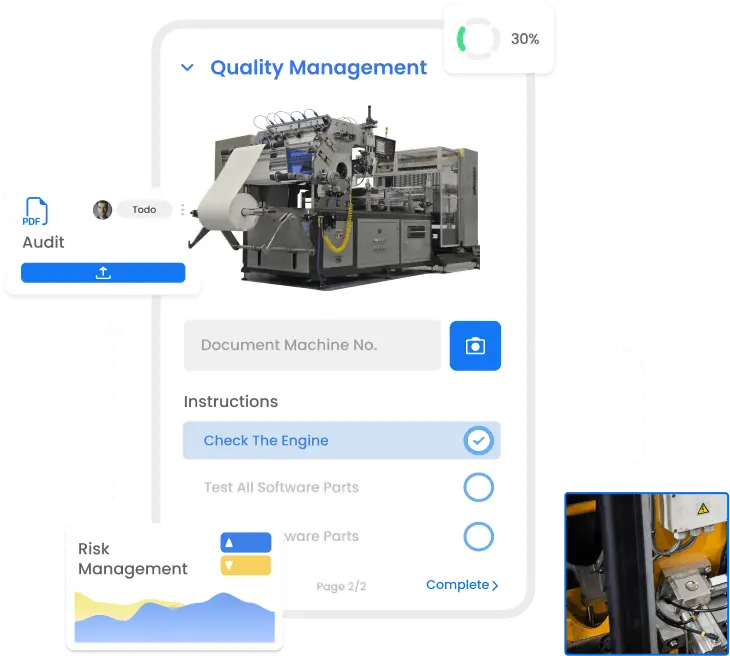Summary: Quality management is paramount for meeting customer expectations, and organizations rely on various tools and techniques to succeed. These tools, including cause-and-effect diagrams, stratification, and numerical analysis, are indispensable for managing quality effectively. Developed by experts like Kaoru Ishikawa, these tools facilitate understanding relationships between defects and causes, enabling organizations to implement effective quality control processes.
Understanding Quality Management Tools and Techniques
Employing management software aids in documenting and analyzing data, further enhancing quality processes. From bar charts to frequency distributions, these tools provide insights into the relative importance of defects and enable proactive quality management. Whether it’s a professor of engineering at Tokyo University or quality teams in organizations worldwide, these tools are used to gather, analyze, and manage quality data, thereby guaranteeing the quality of products and services.
What Are Quality Management Tools?
Quality management tools are instruments or methodologies to analyze and improve processes, identify defects, and enhance overall quality performance. These tools enable organizations to collect, interpret, and visualize data, allowing them to make informed decisions and drive continuous improvement. By employing these tools, businesses can uncover patterns, trends, and root causes of quality issues, leading to better problem-solving and decision-making.
Importance of Quality Management Tools and Techniques
Quality management tools and techniques are essential for several reasons. Firstly, they provide a structured approach to quality improvement, enabling organizations to identify and address issues systematically. Secondly, these tools help measure and monitor quality standards, ensuring compliance with customer requirements and industry regulations. Additionally, quality management tools enhance communication and collaboration among teams, facilitating a data-driven approach to problem-solving and decision-making.
The 7 Basic Quality Management Tools
To build a strong foundation in quality management, one must be familiar with the 7 basic quality management tools. These tools, often referred to as the “seven basic tools of quality,” are versatile and can be applied across various industries and domains. Let’s explore each tool in detail:
Control Charts
Control Charts are graphical representations of data over time. They help monitor process performance by plotting data points and establishing upper and lower control limits. Control charts enable organizations to determine if a process is stable or experiencing variations that require further investigation. By analyzing control charts, businesses can detect trends, shifts, or outliers that may impact quality and take corrective actions accordingly.
Flowcharts
Flowcharts visually represent a process, outlining the sequence of steps and decision points. They allow organizations to understand the flow of activities, identify bottlenecks, and optimize processes for improved efficiency. Flowcharts enable teams to visualize the entire process and identify areas where defects or errors may occur. Organizations can streamline operations and enhance overall quality by mapping out the process through a flowchart.
Check Sheets
Check Sheets are simple data collection tools used to gather and record data in a structured manner. They provide a template for collecting data on specific events or occurrences. Check sheets help quality professionals track the frequency and occurrence of defects or issues. By systematically collecting data using check sheets, organizations can identify patterns, prioritize improvement efforts, and allocate resources effectively.
Pareto Charts
Pareto Charts are bar graphs that display the frequency or occurrence of problems or causes in descending order. They help identify the most significant issues or causes contributing to quality defects. Pareto charts enable organizations to focus on addressing the vital few factors that have the most significant impact. By analyzing Pareto charts, businesses can allocate resources efficiently and target problem areas for improvement.
Histograms
Histograms provide a visual representation of data distribution. They display the frequency or count of data points within specific ranges or bins. Histograms allow organizations to understand data distribution and identify patterns such as clustering or gaps. By analyzing histograms, businesses can gain insights into the variability of processes and make data-driven decisions for quality improvement.
Scatter Diagrams
Scatter Diagrams (scatter plots) are used to study the relationship between two variables. They plot data points on a graph, with one variable on the x-axis and the other on the y-axis. Scatter diagrams help identify the correlation or association between variables. By analyzing scatter diagrams, organizations can determine if there is a positive, negative, or no relationship between the variables. This information is valuable for understanding the factors that impact quality and guiding improvement efforts.
Cause-and-Effect Diagrams
Cause-and-Effect Diagrams (fishbone or Ishikawa diagrams) are visual tools used to identify and organize possible causes of a problem or quality issue. They help teams brainstorm and categorize potential causes into primary categories such as people, processes, materials, machines, environment, and management. Cause-and-effect diagrams enable organizations to understand the root causes and sub-causes contributing to quality defects. Businesses can systematically investigate and address the underlying issues affecting quality using these diagrams.
How to Master the 7 Basic Quality Management Tools
Now that we have explored the 7 basic quality management tools let’s discuss how to master them effectively. By following these steps, you can harness the full potential of these tools for quality improvement:
Step 1: Familiarize Yourself with Each Tool
Start by gaining a thorough understanding of each quality management tool. Study their principles, features, and applications. Familiarize yourself with each tool’s graphical representations, calculations, and interpretations. This will lay the groundwork for effectively utilizing them in practice.
Step 2: Understand When and How to Use Each Tool
Next, learn about the appropriate situations for using each tool. Different quality management tools are suited for specific purposes. For example, Control Charts are ideal for monitoring process stability, while Pareto Charts help prioritize improvement efforts. Understand the context and requirements of your quality improvement project to determine which tool(s) to employ.
Step 3: Gather Relevant Data
To apply quality management tools, you need relevant and accurate data. Identify the data points or parameters necessary to analyze the quality aspects of your process or product. Collect data consistently and ensure its accuracy and completeness. The quality of your analysis depends on the quality of the data you input.
Step 4: Apply the Tools to Analyze Data
Once you have the data, apply the appropriate quality management tools to analyze and interpret it. Use control charts to monitor process performance and detect variations. Create flowcharts to visualize the process flow and identify areas for improvement. Utilize check sheets to record and analyze data on defects or occurrences. Employ Pareto charts, histograms, scatter diagrams, and cause-and-effect diagrams to uncover patterns, trends, and root causes.
Step 5: Interpret the Results and Take Action
After analyzing the data using the quality management tools, interpret the results to gain insights and make informed decisions. Identify areas for improvement, prioritize actions based on the significance of issues or causes, and develop action plans. Collaborate with relevant stakeholders to implement corrective and preventive measures. Monitor the impact of your actions and iterate as needed to drive continuous improvement.

Advance your quality through digitization
- Inspections & Audits
- Safety & Compliance
- Risk assessment
- Corrective Actions & Reporting
Real-World Applications of the 7 Basic Quality Management Tools
The 7 basic quality management tools find applications across various industries and domains. Here are a few examples:
Quality Control in Manufacturing
In manufacturing, control charts monitor process stability and ensure consistent product quality. Pareto Charts help identify the most common defects or causes, allowing manufacturers to focus on areas with the highest impact. Flowcharts and cause-and-effect diagrams aid in process optimization, reduce waste, and enhance efficiency.
Process Improvement in Service Industries
Service industries like healthcare and hospitality can benefit from quality management tools. Check sheets help track and analyze customer complaints or incidents. Flowcharts assist in visualizing and streamlining service processes to reduce wait times and enhance customer satisfaction. Scatter Diagrams and Cause-and-Effect Diagrams aid in identifying the factors influencing service quality and facilitating process improvements.
Project Management
Quality management tools play a role in project management by monitoring and controlling project quality. Control Charts help track project performance metrics, ensuring adherence to quality standards. Flowcharts and check sheets assist in identifying process bottlenecks and tracking defects. Pareto Charts and Cause-and-Effect Diagrams aid in analyzing project risks and determining the root causes of quality issues.
Quality Assurance in Healthcare
Quality management tools are employed in healthcare to enhance patient safety and care. Control Charts help monitor patient outcomes and safety indicators. Check sheets assist in tracking errors or adverse events. Pareto charts aid in identifying common causes of medical errors. Flowcharts and cause-and-effect diagrams help analyze and improve care processes.
Benefits of Utilizing Quality Management Tools and Techniques
Implementing quality management tools and techniques offers numerous benefits to organizations. Some of the key advantages include:
Improved Decision-Making
Quality management tools provide objective data and insights that support informed decision-making. By analyzing data using these tools, organizations can make evidence-based decisions, prioritize actions, and allocate resources effectively.
Enhanced Problem-Solving
The systematic approach of quality management tools facilitates effective problem-solving. These tools help identify the root causes of quality issues, enabling organizations to address them proactively. Through the application of data-driven problem-solving techniques, teams can discover enduring solutions and forestall recurrent issues.
Increased Efficiency and Productivity
The application of quality management tools helps optimize processes, eliminate waste, and enhance efficiency. Organizations can improve productivity, reduce costs, and achieve higher output with fewer resources by identifying bottlenecks, reducing defects, and streamlining workflows.
Cost Reduction
Quality management tools enable organizations to identify and address quality issues early on, reducing the costs associated with rework, scrap, and customer complaints. Businesses can achieve cost savings and improve profitability by improving process efficiency and minimizing defects.
Customer Satisfaction and Retention
Organizations can consistently deliver high-quality products and services and enhance customer satisfaction and loyalty. Quality management tools help identify and address customer concerns, ensuring their requirements are met. Satisfied customers are more likely to become repeat customers and recommend the business to others.
Overcoming Challenges in Implementing Quality Management Tools
Implementing quality management tools and techniques may encounter several challenges. Here are some common obstacles and strategies to overcome them:
Resistance to Change
Introducing new tools and methodologies can face resistance from employees accustomed to existing practices. Effective communication and training are crucial to address this challenge. Provide comprehensive training on the benefits and applications of quality management tools. Engage employees and explain how these tools can improve their work and contribute to the organization’s success.
Lack of Data Availability or Quality
Organizations may sometimes face challenges in gathering relevant and accurate data for analysis. To overcome this, data collection processes and systems that ensure data integrity and completeness must be established. Educate employees on the importance of data collection and provide clear guidelines for data recording. If necessary, invest in technology solutions that automate data collection and analysis.
Limited Resources
Quality management tools may require additional resources like software, training, or dedicated personnel. It is essential to prioritize and allocate resources effectively. Start with a focused approach, implementing tools in areas with the highest impact or where quality issues are most prevalent. Gradually expand the implementation as resources become available or the organization sees the benefits of the initial efforts.
Lack of Leadership Support
Obtaining leadership support is crucial for successful implementation. Leaders should understand the value of quality management tools and actively support their adoption. Communicate the benefits of these tools to leaders and demonstrate how they align with the organization’s goals and values. Encourage leaders to champion the implementation efforts and provide the necessary resources and support.
Ineffective Integration with Existing Systems
Integrating quality management tools with existing systems and processes can be challenging. Assessing and understanding the organization’s current systems and workflows is essential. Identify areas where the tools can seamlessly integrate and enhance existing processes. Collaborate with relevant stakeholders, such as IT departments or process owners, to ensure smooth integration and minimize disruptions.
Continuous Improvement in Quality Management Tools
Implementing quality management tools is not a one-time effort but a continuous journey. Organizations should embrace a culture of constant improvement and strive for ongoing refinement of processes and practices. Regularly review and evaluate the effectiveness of the implemented tools. Solicit feedback from employees and stakeholders to identify areas for improvement. Stay updated on new quality management tools and methodologies to further enhance your organization’s quality initiatives.
FAQ | Quality Management Tools
What are the 7 Basic Quality Management Tools?
The 7 Basic Quality Management Tools are a set of techniques used in quality management to identify, analyze, and solve quality-related issues. They include: Pareto Chart, Cause-and-Effect Diagram (Fishbone Diagram), Control Charts, Histogram, Scatter Diagram, Flowchart, and Check Sheet.
Why are the 7 Basic Quality Management Tools important?
These tools provide a structured approach to quality improvement, helping organizations identify problems, analyze root causes, and implement effective solutions. They facilitate data-driven decision-making and continuous improvement efforts.
How do I determine the appropriate tool for a particular quality issue?
The choice of tool depends on the type of data you have and the nature of the problem. For example, a Pareto Chart is useful for identifying the most significant issues, while a Cause-and-Effect Diagram helps analyze the root causes of a problem. Understanding the strengths and applications of each tool will guide your selection process.
Do I need specialized training to use these tools?
While specialized training can enhance your proficiency in using these tools, many resources are available online and in books to help you learn and apply them effectively. Practice and experience are key to mastering these techniques.
Are these tools applicable across all industries or sectors?
Yes, the 7 Basic Quality Management Tools are versatile and can be applied across various industries and sectors, including manufacturing, healthcare, service, and education. The principles behind these tools are universal and can be adapted to suit specific contexts.
How can these tools contribute to business success?
By enabling organizations to identify and address quality issues efficiently, these tools can lead to improved product or service quality, reduced waste, increased customer satisfaction, and, ultimately, enhanced competitiveness and profitability.
Are there any constraints associated with these tools?
While powerful, these tools are not panaceas and may have limitations in certain situations. For example, they rely on accurate and relevant data, so if data quality is poor, the results may be misleading. Additionally, they may not be suitable for addressing complex or systemic issues that require more advanced analytical techniques.
Image: Adobe Stock – Copyright: © tippapatt – stock.adobe.com







